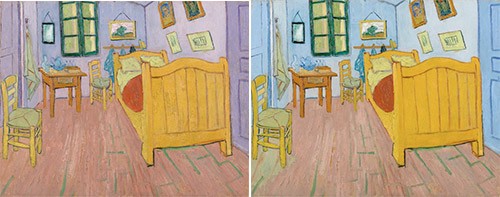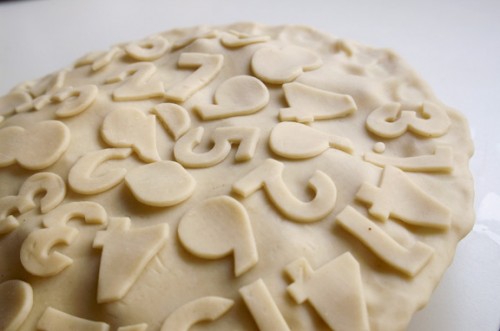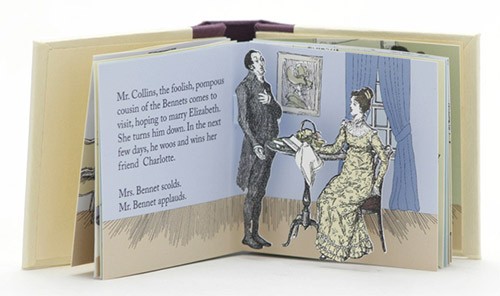
Jane Austen’s Pride & Prejudice was published 200 years ago last January. To mark the occasion, my friend Cathy sent me the OED’s online word of the day.
Collins, n.1
A letter of thanks for entertainment or hospitality, sent by a departed guest; a ‘bread-and-butter’ letter.
Pronunciation:/kɒlɪnz/
Etymology: < the name of a character, William Collins, in Jane Austen's Pride & Prejudice (ch. xxii).
1904. Chambers's Jrnl. 27 Aug. 611/2. When we do not call a letter of thanks for a visit ‘a board and lodging’, we call it a ‘Collins’.
1907. Lady Grove. Social Fetich. 74 The ‘Collins’ letter I had dutifully bored my hostess with.
1911. W. A. Raleigh. Lett. (1926) 375. This is only a Collins, and a Collins should not wade into deep places. It should be loving but neat.
1926. R. Bridges. Henry Bradley ii. 19. Wherever I can I shall let him speak for himself, and..group the quotations from his letters under subjects..This first Collins will serve to prelude them.
1940. W. de la Mare. Pleasures & Speculations. 327. The amateur composer even of a Collins or bread-and-butter letter realizes that his mother tongue is a stubborn means for the communication of gratitude.
I get several “words of the day” in my inbox, but I didn’t know about the OED one until Collins arrived. I quickly subscribed and look forward to their odd-ball words every day:
periplus, n. An account or narrative of a circumnavigation or other voyage; a manual of navigation.
statuomania, n.Excessive or passionate enthusiasm for erecting statues. Chiefly with reference to France.
genethliacon, n. A birthday ode.
akathisia, n. Inability to sit down or to remain seated, resulting from a subjective need or desire to move, frequently accompanied by sensations of muscular twitching, and often occurring as a side effect of the use of certain psychoactive drugs; an instance of this. Also in extended use.
I could go on and on. Subscribe yourself from the link on the right column of the OED home page.
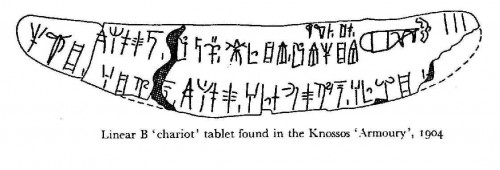 In 1900, Arthur Evans, an English archaeologist, digging in Knossos on the island of Crete, unearthed clay tablets with an unknown writing system for an unknown language. He called it Linear B, and it wasn’t until 1951 that the tablets were finally deciphered. Recently I read The Riddle of the Labyrinth: The Quest to Crack an Ancient Code by Margalit Fox, an account of how the language was deciphered. The book is so well written and so interesting that I actually gulped it down, reading it in pretty much one sitting! Written for a general audience, you don’t need to know about linguistics, puzzle solving, or any language other than English. She walks the reader through the complicated bits and turns the story into a detective tale.
In 1900, Arthur Evans, an English archaeologist, digging in Knossos on the island of Crete, unearthed clay tablets with an unknown writing system for an unknown language. He called it Linear B, and it wasn’t until 1951 that the tablets were finally deciphered. Recently I read The Riddle of the Labyrinth: The Quest to Crack an Ancient Code by Margalit Fox, an account of how the language was deciphered. The book is so well written and so interesting that I actually gulped it down, reading it in pretty much one sitting! Written for a general audience, you don’t need to know about linguistics, puzzle solving, or any language other than English. She walks the reader through the complicated bits and turns the story into a detective tale.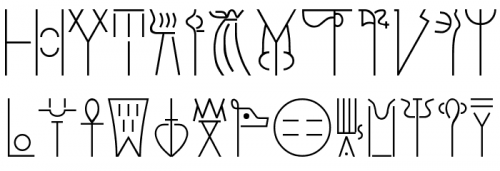


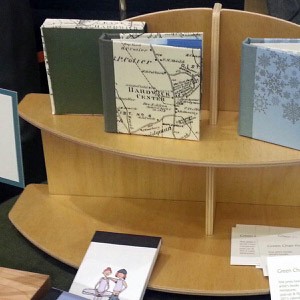 I’ll be exhibiting my books and ephemera at
I’ll be exhibiting my books and ephemera at 
